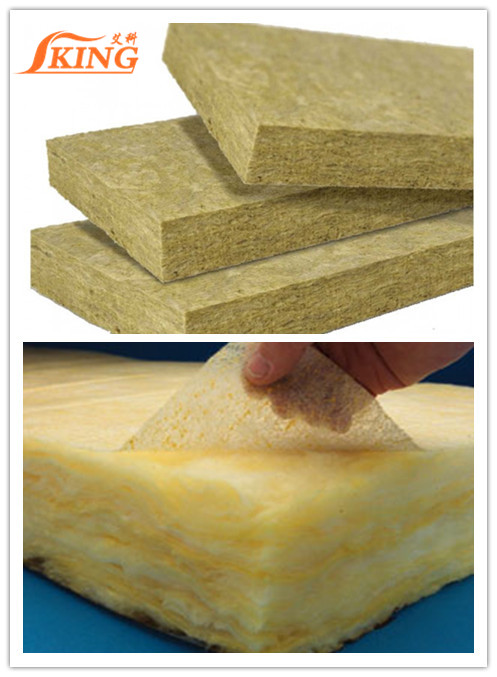IKING GROUP-INSULATION AND ACOUSTIC SOLUTION FOCUS
When insulating a building it is important to ensure you have the best insulation for the job. Fibreglass and mineral wool are two of the more popular types of insulation used in buildings, but both have their pros and cons. We’ve outlined some of the important factors to consider when deciding if fibreglass or mineral wool will be best for your project.
Glass wool insulation
Glass wool insulation, also known as fibreglass, is made from glass fibres. Glass is heated to very high temperatures until it melts, and is then spun quickly to create fibres. These fibres are then bound together to be used as insulation. The glass fibres create pockets of air which act as barriers to prevent heat loss, because air is a poor conductor of heat. Glass wool can be found in batts and rolls, loose fill insulation and also within insulation boards.
Mineral wool insulation
Mineral wool, also known as rock wool or stone wool, is made from a selection of raw materials, such as stone and glass. These raw materials are treated in a similar way to glass, in that they are melted at high temperatures until they melt, and then they are spun to form fibres, similar to wool. This wool is then packaged up into batts, rolls or slabs.
R value
When comparing the two, glass wool has a slightly lower R-value of around 2.2-2.7 compared with 3.0-3.3 of mineral wool, which means it is slightly less effective at preventing heat loss through conduction.
Sustainability
If you’re looking at the most sustainable option, glass wool is generally made up of up to 30% recycled materials, whereas mineral wool in comparison consists of up to 70% recycled materials. As environmental impact and sustainability is becoming more of a focus, this is becoming more of an important factor when choosing the right insulation material.

Sound insulation
In terms of sound insulation, mineral wool is often the preferred choice for noisy areas. This is because it is much more dense than glass wool, so much less sound travels through the insulation.
Ease of installation
If you’re considering installing the insulation yourself, mineral wool is considered much easier to handle. Although heavier than glass wool, mineral wool is much easier to cut, move and fit into place. Glass wool on the other hand is more limp, which makes it hard to fit into the spaces required.
Moisture resistance
If you’re looking for a moisture resistant form of insulation, mineral wool is the clear winner. Mineral wool is resistant to water, so it doesn’t get damp and provide good growing conditions for funghi, mould, mildew or other bacterial growth. Glass wool on the other hand can get wet and damp, and as well as promoting the growth of funghi, mildew and rot its insulating properties are severely reduced.
Fire resistance
Although both mineral wool and glass wool are non-combustible, mineral wool has far better fire resistant qualities, so much so that it can be used as a fire stop. Therefore, this is something to consider if where you’re installing insulation is going to be at risk of fire, and to what extent.
Cost
If you’re conscious of a limited budget, then glass wool may be the choice of insulation for you. It can cost around 10% less than mineral wool, and still is effective at insulating your home to reduce heat loss and energy bills.
Whichever form of insulation you choose, insulating your home is a great way to keep your home warm, prevent heat loss and reduce energy bills. Take a look at our range of insulation and call our team of experts today for any queries or advice on 86-022-60767280